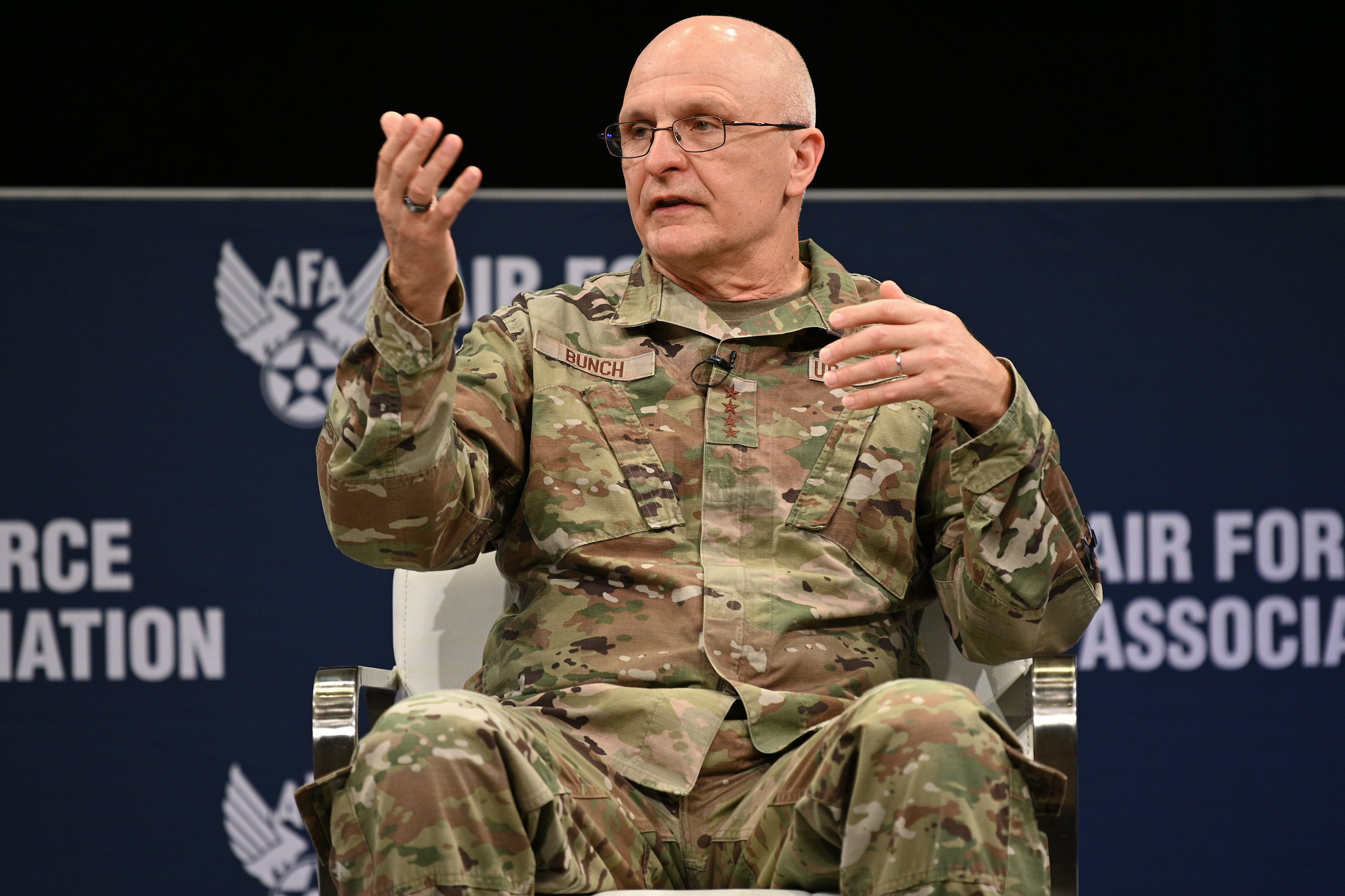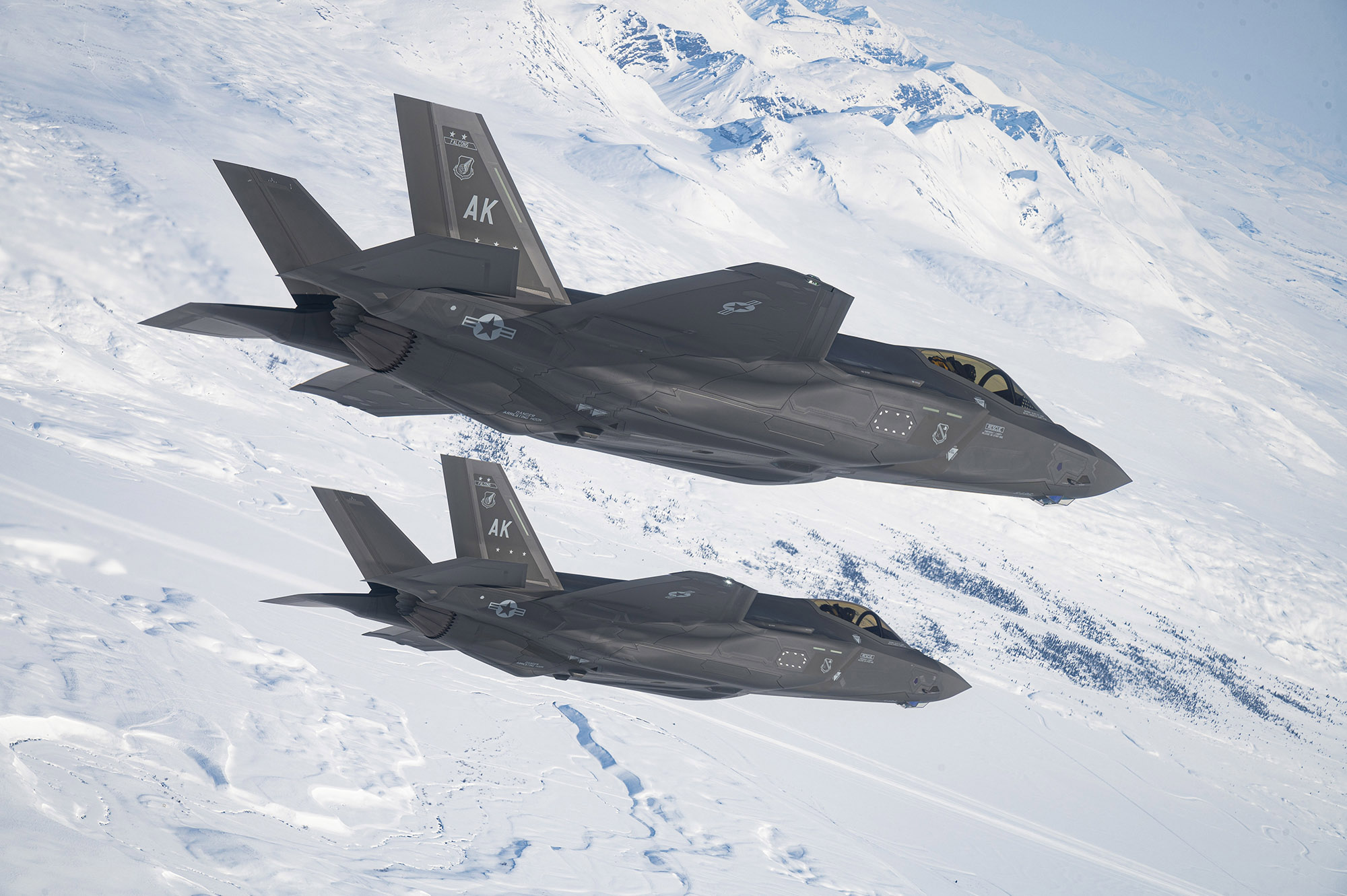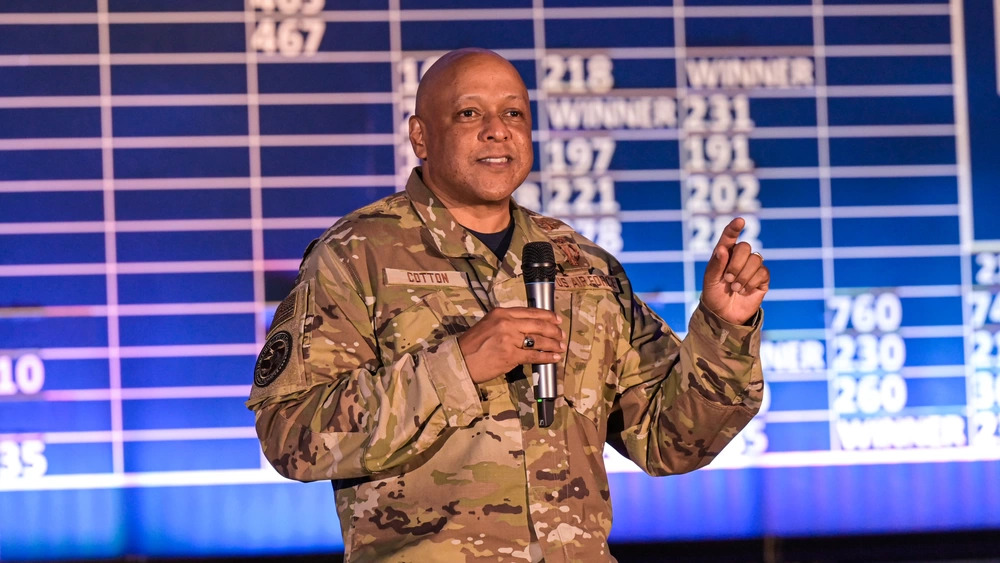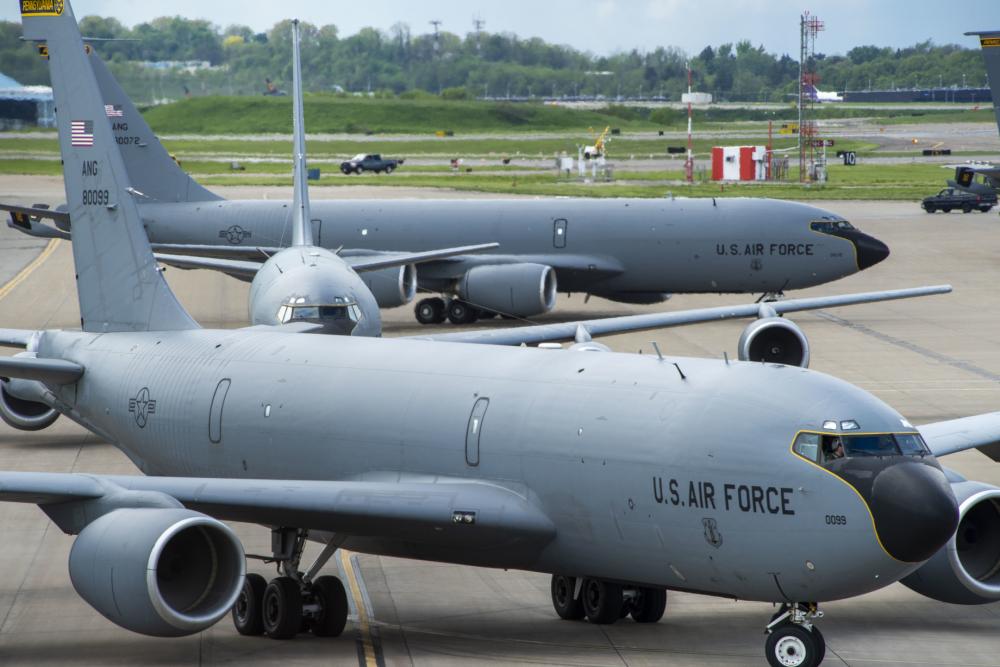Breaking weapons up into modular segments for ease of upgrade could also improve defense industrial surge capacity, the outgoing head of Air Force Materiel Command said. Modularity could also help address the issue of intellectual property while keeping more companies in business, with more rapid turnover of weapon segment production and greater responsiveness to threat changes, he said.
Gen. Arnold W. Bunch Jr., who is retiring, told Air Force Magazine in an exit interview that modularity will be “one of the keys” to weapon production in the future.
Lt. Gen. Duke Z. Richardson succeeds Bunch during a ceremony June 13 at the National Museum of the U.S. Air Force in Ohio.
Referring to the future munitions, “I see us going modular, where we have an open architecture and then we can put in different components to do different things,” Bunch said. “We’re going to need to replace parts, changing them out for what the threat drives or as the technology shifts.”
Bunch acknowledged that weapons have frequently been a budgetary “bill payer”—most recently to support a surge in research and development to confront the China threat—but said modularity would reduce the time between competitions and allow USAF to more “rapidly adapt” to threat changes. The same idea will likely apply to uncrewed aircraft, he said.
Being limited to single suppliers for key weapons has contributed to munitions shortages in recent years and most recently has been raised as a problem as the U.S. has provided Ukraine with Javelin anti-tank and Stinger anti-aircraft missiles with no swift means of restocking them. The Air Force relies on individual companies for certain staple weapons—such as Boeing for the Joint Direct Attack Munition (JDAM) and Lockheed Martin for the Joint Air-to-Surface Standoff Missile (JASSM)—and some munitions companies have said they have “maxed out” their production capacity.
As for intellectual property rights, that’s “part of the challenge,” Bunch said, but USAF is now “[putting] those things on contract,” such that the Air Force will own the technical baseline and be more agile in competing and integrating new capabilities.
“You could very easily” hold competitions for a plug-and-play seeker or booster segment of a weapon, he said, noting that the armament directorate is pursuing that idea now.
Creating a completely digital enterprise will open up such options, Bunch said, such as in the Golden Horde Vanguard program in which the Air Force demonstrated Small Diameter Bombs receiving and interpreting new instructions mid-flight and collaborating with each other to strike designated targets.
For Golden Horde, “We created a digital environment so that we can bring in different ideas. And we can look at those to determine how [and] … what do we want want to go out and buy, and what gives us the most return on investment,” Bunch said. This approach will “give us more flexibility than what we’ve had.”
Would the Air Force be the integrator for these systems?
“There are a couple different ways you could do that,” Bunch said. “You could hire an integrator, or you can do it yourself,” but it’s an area where the Air Force would have some flexibility. “You may not need to play that role,” he said.
However, “We want our teams to be more involved” in setting the technical baseline, such as “knowing what the interface is,” he added. That way, “you know the system better and you can make better choices.”
The Air Force is taking an integrator/modular supplier approach to the new Stand-in Attack Weapon (SiAW), which will merge the capabilities of weapons such as JDAM and the High-speed Anti-Radiation Missile (HARM).
Bunch said his crystal ball was murky on whether the return to a Cold War-like security environment would drive a return to multiple competitors vying for a lion’s share of annual production of an entire system, as in the so-called “Great Engine War” of the 1980s.
“If you’ve managed one program … you’ve managed one program,” Bunch said, making the point that every acquisition is unique and that “in every case, we’re going to have to weigh all this out.”
“We’ve got to start with the end in mind,” he said. “We’ve got to understand: What do we really want this system to be, and how are we going to manage it long term, and what are we going to put on contract? Do we need two people producing these? Do I only need one that serves as an integrator? Do I want to serve as the integrator?” Competitions may shift to having an integrator and holding competitions to show that a supplier can surge-produce a certain quantity of qualified items, he said.
“Those are all things that our future program managers are going to need to look at as we build our acquisition strategy.”








